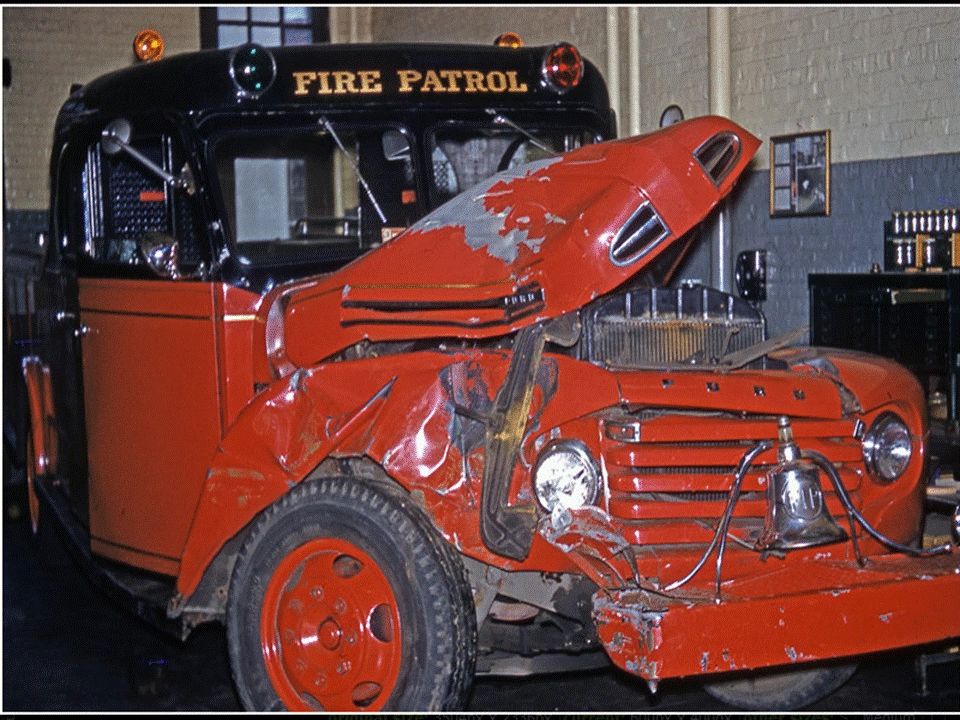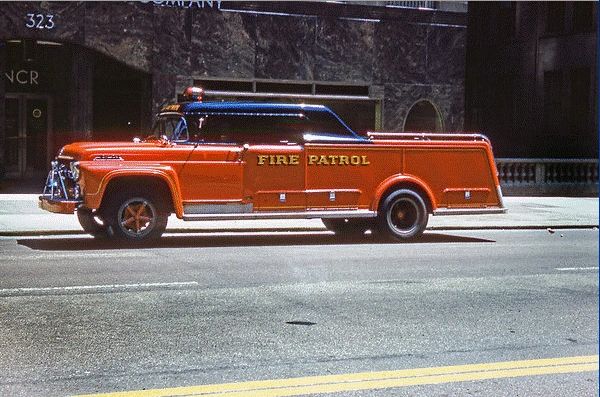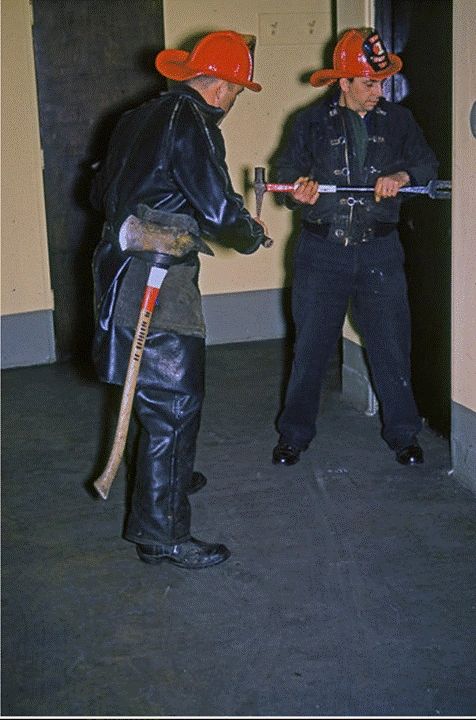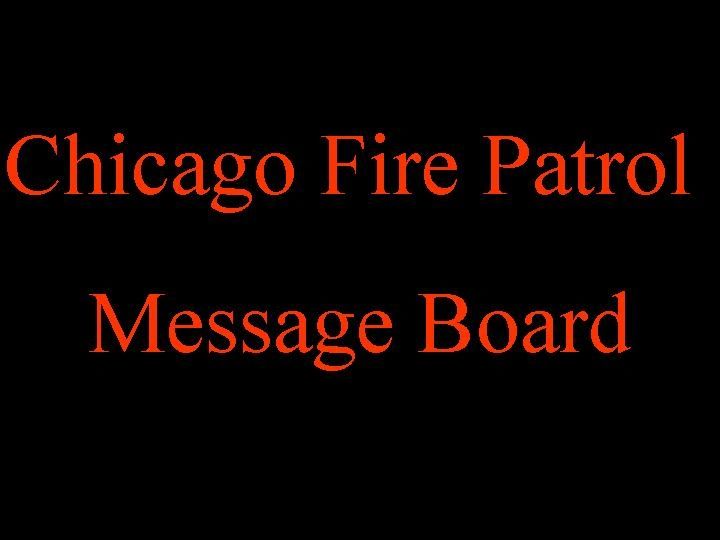History of the Chicago Fire Insurance Patrol
Chicago Fire Patrol Foreword
In the last half of the nineteenth century and the first half of the twentieth, at least 23 American cities were protected by emergency fire salvage companies that were financed and operated by local boards of insurance underwriters. Their mission was to respond to fire alarms along with the municipal fire departments and reduce the damage caused by smoke and water. They fought their way into burning buildings to save business records, other valuable items and cover property with their waterproof tarpaulins. The fire patrolmen braved the heat and smoke along side firefighters from the engines and ladder trucks – facing the same dangers while suffering the same painful and, sometimes fatal injuries.
In some cities they were called “salvage corps;” in others “insurance patrols” and none had a prouder history than the Chicago Fire Insurance Patrol. At its peak strength in the late 1920’s, the Fire Patrol(chicago fire insurance patrol) operated nine salvage companies and responded to more that 11,000 alarms per year. Organized on October 2, 1871 – only six days before the Great Chicago Fire – the Fire Patrol(chicago fire insurance patrol) served the city for 87 years, saving property worth millions of dollars and earning numerous citations for heroism and outstanding performances. In many districts they arrived on the scene with the first-alarm units and, whenever it was needed, provided extra manpower to rescue trapped victims. Ten Chicago fire insurance patrolmen lost their lives in the line of duty. As a teenage fire fan in the 1940’s, I came to know and admire the Chicago Fire Patrol(Chicago fire insurance patrol). They wore black rubber coats and boots like other firefighters, but stood out because of their bright red helmets. While firemen were dragging hose and carrying pike poles and axes, the fire insurance patrolmen had heavy salvage covers slung over their shoulders as they entered the building. At an extra-alarm, when a building was fully involved in flames and nothing could be salvaged, the patrolmen often took a second or third line off an engine company and went to work fighting the fire. At a smoky three-alarm fire in a cold storage warehouse fire in the Stock Yards, I saw a dozen semi-conscious firemen, including four fire patrol members, stretched out on a loading dock while being given oxygen from the inhalators. (The CFD didn’t use air masks in those days.)
 Back in the 1870’s, the Fire Patrol’s first superintendent, Benjamin J. Bullwinkle proclaimed that “speed and efficiency” was the unit’s motto and it never changed. There was a sharp military discipline in the way they went about their job, glistening apparatus and spotless firehouses where every piece of equipment was in its place. I occasionally visited the Desplaines Street headquarters of Patrol 1 and 2 on a Friday or Saturday night and it was impressive to see their famous “push off’ when the “waker” bell rang. Fire Insurance Patrolmen slid the brass poles, climbed into the back of the truck and were going out the door in 30 seconds. It may not have been as spectacular as the 1870’s – when overhead harnesses dropped on the horses and a complex rope contraption yanked the blankets off the bunkroom beds – but Superintendent Bullwinkle would have approved.
Back in the 1870’s, the Fire Patrol’s first superintendent, Benjamin J. Bullwinkle proclaimed that “speed and efficiency” was the unit’s motto and it never changed. There was a sharp military discipline in the way they went about their job, glistening apparatus and spotless firehouses where every piece of equipment was in its place. I occasionally visited the Desplaines Street headquarters of Patrol 1 and 2 on a Friday or Saturday night and it was impressive to see their famous “push off’ when the “waker” bell rang. Fire Insurance Patrolmen slid the brass poles, climbed into the back of the truck and were going out the door in 30 seconds. It may not have been as spectacular as the 1870’s – when overhead harnesses dropped on the horses and a complex rope contraption yanked the blankets off the bunkroom beds – but Superintendent Bullwinkle would have approved.Recently I found an article about Ben Bullwinkle that appeared in the New York Times dated May 10, 1887. The mystery concerning his death is solved. According to lore he was gunned down in a barroom brawl. But in fact, he was thrown from his horse in Flagstaff Arizona and died on May 9th 1887 at the age of 40.
CHICAGO, May 9.--Ben Bullwinkle, the famous ex-Chief of the Chicago Fire Insurance Patrol, has died at Flagstaff, Arizona, from injuries received by being thrown from his horse. He was a stockholder in the Arizona Cattle Company and its ... [ END OF FIRST PARAGRAPH ]
The Fire Patrol’s vehicles were maintained by their own shop and ahead of their time in design. In 1937-38 they received the fully enclosed White trucks that looked like streamlined police paddy wagons but were painted red. The fire insurance patrol companies caught some long runs and the new Whites were a warm blessing on Chicago’s freezing winter nights. To my knowledge, these were the first fully enclosed fire apparatus in the entire region. In 1949, the sleek canopy-cab Fords started to arrive, with the CFD’s traditional black-over-red paint scheme. Along with being fast and functional, these were some of the best-looking fire apparatus I’ve ever seen.

Heavily damaged 1949 Ford Patrol Rig sits in Patrol 5's shop awaiting restoration.












